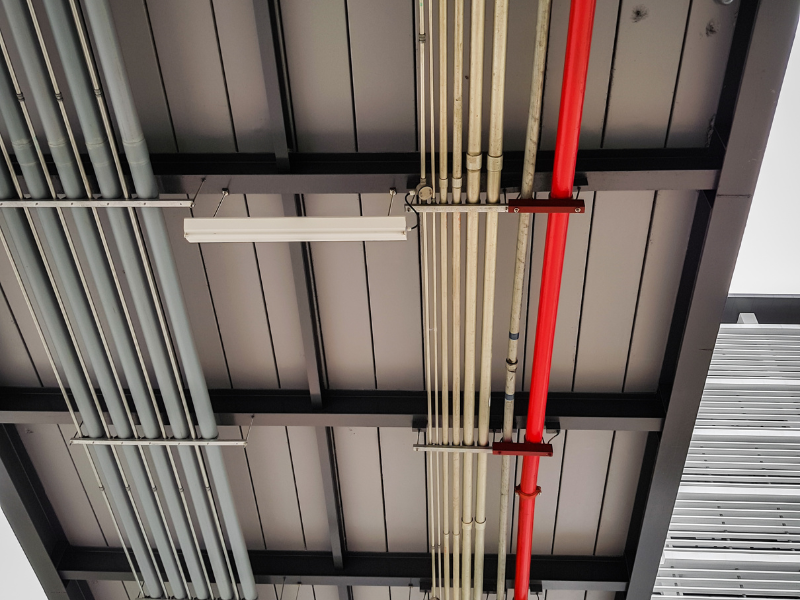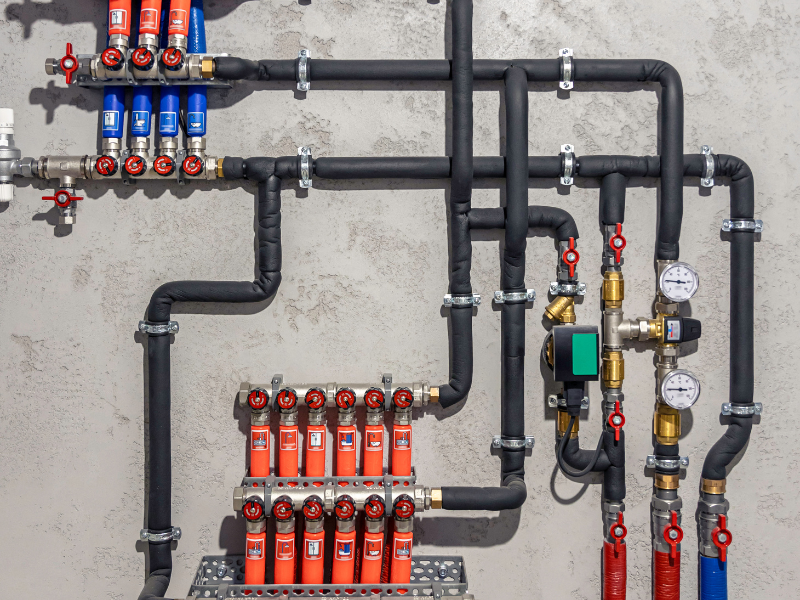In the push towards a decarbonised and more efficient energy landscape, the UK government is implementing a series of major changes to the heat network sector. One of the most significant of these is the upcoming Heat Network Technical Assurance Scheme (HNTAS). If you are a developer, operator, or stakeholder in a heat network project, understanding HNTAS isn’t just a good idea; it’s soon to become an absolute necessity.
Here at Sustainable Energy, we’re committed to helping you navigate the complexities of these new regulations. Our goal is to provide you with the expert guidance you need to ensure your heat network is not only compliant but is also an efficient, reliable, and high-performing asset for years to come.
With over 25 years of experience in developing, designing, operating and optimising heat networks across the UK we have developed an industry-leading heat network dashboard that collects, analyses and presents operating information and reports for heat networks; these dashboards are developed to ensure compliance with upcoming regulations.

What is HNTAS?
HNTAS is a mandatory government scheme designed to ensure that heat networks across the UK meet a minimum set of technical and performance standards. While our industry has long relied on voluntary best practices, this scheme represents a pivotal shift, making compliance a legal requirement under the Energy Act 2023.
Think of it as a quality assurance stamp for heat networks. It aims to tackle some of the most common issues that have historically plagued the sector, such as poor performance, high heat losses, and frustratingly high customer bills. By holding every party, from designers and developers to operators, accountable, HNTAS will help to create a more trustworthy and efficient market for everyone.
The scheme will require heat networks to pass a series of assessments to demonstrate that they’ve achieved and maintained the mandated minimum standards throughout their lifecycle. These standards will be clearly defined and will cover everything from the design of the energy centre to the quality of pipework and the efficiency of individual consumer connections.
Why is HNTAS Being Introduced?
The introduction of HNTAS is part of a broader government strategy to accelerate the deployment of heat networks, a crucial step in achieving the UK’s ambitious net-zero targets. While heat networks are a powerful tool for decarbonisation, their full potential can only be realised if they are built and operated to the highest standards.
The government’s objectives for HNTAS are clear and multifaceted:
- To reduce Carbon Emissions: Inefficient heat networks require more energy to operate, leading to higher carbon emissions. By enforcing better technical standards, HNTAS will ensure these systems are as energy-efficient as possible, driving down their carbon footprint.
- To improve affordability: A well-designed, efficient network is a cost-effective one. By reducing capital and operational costs, the scheme aims to lower bills for end-users, tackling the issue of fuel poverty and providing a more stable, affordable source of heat.
- To enhance consumer experience: Many of the complaints from heat network customers revolve around reliability and performance. HNTAS will improve the quality of heat supplied and the reliability of the service, fostering greater trust and confidence in the sector.
- To build investor confidence: A regulated and standardised market is a more attractive one for investors. By providing a clear framework for quality, HNTAS will help to de-risk projects, stimulating the investment needed to scale up the market.
For a deeper dive into the government’s thinking, you can refer to the official GOV.UK publication on heat networks regulation, which provides a good overview of the scheme’s objectives and principles.
How HNTAS Works
The HNTAS is a performance-based scheme that applies to different elements of a heat network, from the central energy centre to the consumer connections. Compliance will be demonstrated through a series of assessments at various stages of a network’s lifecycle.
The HNTAS Timeline: When to Expect Change
While the official launch of HNTAS is expected in 2026, the foundations are already being laid. The government has been conducting a pilot programme to test the draft standards and procedures, gathering crucial feedback to ensure the scheme works in practice. This phased rollout means it’s not too early to start preparing.
The Three-Stage Process
New heat networks will be required to pass assessments at three key points in their lifecycle to achieve HNTAS certification. These stages ensure that quality is embedded from the very beginning.
- Stage 1: Pre-design: An assessment will be required before the network design is finalised. This stage focuses on the project’s technical feasibility and overall design concept, ensuring the plan is sound before any major financial commitments are made.
- Stage 2: Pre-construction: Before a single pipe is laid, a second assessment will verify that the detailed design and specifications meet the required standards. This helps to prevent costly mistakes and rework during the build phase.
- Stage 3: Pre-operation: The final assessment takes place just before the network becomes operational. This confirms that the as-built network meets all the technical standards and is ready to perform as designed.
HNTAS for Existing Networks
The scheme will also apply to existing networks, with a transition period to give operators time to get the right systems and data in place. Assessments for existing networks will be required after a set period to ensure performance levels meet the new standards. The initial focus will be on getting the necessary metering and data monitoring in place, which is a key component of proving performance.

The Role of CIBSE CP1 and Regulatory Standards
For years, the industry has relied on the Chartered Institution of Building Services Engineers (CIBSE) Code of Practice (CP1) as the go-to technical standard for heat networks. Our MD, Dr Gabriel Gallagher, was part of the steering group, and the lead author, Paul Woods, has worked with many of the team here at Sustainable Energy on several of our leading heat network developments. HNTAS is being developed in close alignment with this established code.
In fact, the updated CP1 will form the technical foundation for HNTAS. The government is working with CIBSE to ensure the new regulatory standards are consistent with the principles of CP1.
This is excellent news for anyone who has already designed or built a network to CP1 standards, as you will be well-prepared for the new requirements. However, HNTAS will make these standards mandatory, providing a legal framework for compliance and enforcement.
Here’s a quick overview of how they relate:
- CIBSE CP1: The recognised industry-led code of practice. It sets out voluntary minimum standards for UK heat networks.
- HNTAS: A mandatory government-led scheme that will adopt and enforce new regulatory standards based on an updated version of CP1.
For a deeper technical understanding, you can download a copy of CIBSE CP1 directly from the CIBSE website.
The Sustainable Energy Difference
At Sustainable Energy, we’ve always believed that a truly successful project is one that’s built on a foundation of quality. Our approach to heat network design, feasibility, and construction has consistently aligned with, and often exceeded, the principles now being enshrined in HNTAS.
Our commitment to a holistic, full-lifecycle service means we can help you prepare for the new regulations with confidence. We can assist you with:
- Technical compliance reviews: We can assess your existing or planned network against the draft HNTAS standards, identifying any gaps and providing clear, actionable recommendations.
- Feasibility and masterplanning: By integrating HNTAS requirements from the very start, we ensure your project is compliant by design, reducing the risk of costly rework down the line.
- Optimisation studies: For existing networks, we can conduct in-depth studies to diagnose performance issues and recommend improvements that will help you meet HNTAS requirements and reduce operational costs.
Building a Better Heat Network Future
The Heat Network Technical Assurance Scheme is a welcome and necessary step towards a more reliable, efficient, and consumer-focused heat network market. While the new requirements may seem daunting, they represent an opportunity to drive genuine quality and innovation in the sector.
By partnering with an experienced and independent consultancy like Sustainable Energy, you can turn a regulatory challenge into a strategic advantage. We are here to guide you through every stage, ensuring your projects are not only compliant but are also at the forefront of the UK’s energy transition.
If you have a project in mind or want to learn more about how we can help you prepare for HNTAS, please get in touch with our team today.
